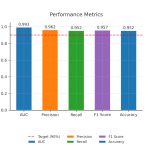Prompt engineering – the crafting of effective inputs for generative AI – is emerging as a critical skill in healthcare. This article provides a comprehensive overview of six key prompt styles and their applications for clinicians and clinical informatics teams: Instructional, Role-Based, Zero-shot/Few-shot/Contextual, Chain-of-Thought/Comparison, Critique/Rewrite, Extraction/Data-to-Text, and Open-ended/Evaluation. This article describes each prompt style and illustrates them with practical healthcare scenarios (ranging from discharge planning and patient education to diagnostic reasoning and triage). Results from recent studies and use cases demonstrate how these strategies can improve clinical workflows, enhance documentation quality, support decision-making, and promote patient safety. This article also discusses the implications of prompt engineering in augmenting clinical practice – including benefits, limitations, and the need for training and guidelines – and conclude that deliberate prompt design can help realize the potential of large language models in medicine while mitigating risks.
The advent of large language models (LLMs) like GPT-4 has introduced powerful new tools into healthcare, capable of generating human-like text for various tasks. LLMs have the potential to revolutionize clinical medicine by enhancing healthcare access, diagnosis, surgical planning, and education, but their utilization requires careful prompt engineering to mitigate challenges like hallucinations and biases[1]. Prompt engineering refers to the practice of designing, refining, and implementing prompts (instructions or questions) that guide an LLM’s output[2]. With the widespread adoption of generative AI – ChatGPT reached 100 million users within months of release – both patients and medical professionals are increasingly interacting with these tools[3]. However, harnessing LLMs effectively in medicine is not straightforward: the quality and safety of the AI’s responses depend heavily on how questions are asked. In fact, recent findings suggest that simply giving clinicians access to an AI chatbot without training in prompt techniques yields little benefit, as LLM output is highly sensitive to prompt formulation[4][5]. There is growing recognition that prompt engineering is an important emerging skill for medical professionals[6] and that deliberate techniques are needed to improve LLM performance in answering medical questions[7].
In this context, a framework of six prompt styles and their relevance to healthcare is outlined. Each style of prompt shapes the AI’s response in a distinct way. In the Methods and Framework section, this article defines these prompt styles with examples, and in Results and Use Cases each prompt is demonstrated through realistic healthcare scenarios (e.g. composing discharge plans, educating patients, assisting in triage, etc.). How these prompting strategies can improve clinical workflow efficiency, documentation quality, decision support, and patient safety, while also considering their limitations is then addressed as well.
Here are the six major prompt engineering styles and how they can be applied in healthcare settings, following a commonly used categorization of prompt types. Each style is defined with an example prompt (in italics) reflecting a healthcare use case:
- Instructional Prompts: These are direct commands or questions that tell the AI exactly what task to perform or what question to answer. The prompt is typically an explicit instruction. For example: “Summarize the latest CDC guidelines for diabetes management in two bullet points.” This single-sentence prompt explicitly asks for a summary in bullet point form[8]. In healthcare, instructional prompts are used for concise outputs like guideline summaries, checklists, or answers to specific questions. By clearly specifying the task and format, instructional prompts yield focused responses (e.g., a brief summary of new clinical guidelines or a list of differential diagnoses for given symptoms).
- Role-Based Prompts: These prompts set a persona or role for the AI, influencing the style and detail of the answer. The AI is instructed to respond as if it were a certain expert or stakeholder. For example: “You are a biotech research analyst. Explain the impact of CRISPR technology on rare disease treatment to a non-technical audience.”[9] Here the model is asked to adopt the voice of a biotech analyst explaining a complex medical innovation in layman’s terms. In clinical use, role-based prompting can ensure the AI’s answer is tailored to a perspective – for instance, instructing the AI to act as a cardiologist when interpreting an ECG, or as a health educator when counseling a patient. This often yields more contextually appropriate and professionally toned responses, as the model gives its answer with the specified expertise or empathy level of the given role.
- Zero-shot, Few-shot, and Contextual Prompts: These three related styles involve how much background or examples are given to the model along with the task:
- Zero-shot prompting provides no examples – the model gets only the task instruction with no demonstrations. It must answer based on its general training. For example: “Name three current applications of mRNA technology in biotech.”[10] is a zero-shot prompt (the model is not shown any example answers, just asked to list applications).
- Few-shot prompting gives one or more examples of input-output pairs before asking the model to perform the task on a new input. The prompt effectively says: “Here are some examples of how to do this task; now do it for this new case.” For instance, one might show the model a couple of sample clinical cases and their diagnoses, then ask it to diagnose a new case. For example, the prompt provides mutation notation examples (“BRCA1 c.68_69delAG” → “BRCA1 deletion mutation at positions 68 and 69”) to teach the format, then asks the model to convert another notation[11]. Few-shot prompts are useful in healthcare to nudge the model toward a desired format or standard – e.g., providing an example of a well-written SOAP (Subjective, Objective, Assessment, Plan) note so the model writes the next one similarly.
- Contextual prompts supply additional background information or data alongside the request. The idea is to ground the AI’s response in provided context. For example: “Given the following patient data and genetic profile, suggest possible personalized treatment options. [Insert data]”[12]. Here the model receives specific patient information (labs, history, genetics) and must incorporate it into its answer. Contextual prompting is common in clinical settings – one might feed the model a portion of a patient’s chart or clinical guidelines and then pose a question about it. This approach can improve relevance and factual accuracy by anchoring the AI to real data (for instance, providing a patient’s medication list and asking the AI to check for drug interactions).
- Chain-of-Thought & Comparison Prompts: These prompts encourage the AI to produce a more analytical, stepwise answer or to explicitly compare two options:
- Chain-of-Thought (CoT) prompting asks the model to walk through a reasoning process step by step, rather than giving a brief answer. The prompt may explicitly say “think this through step by step” or otherwise require a multi-step explanation. For example: “Explain step-by-step how a hospital processes an insurance claim for a cardiac procedure.”[13]. The expected output is a logical sequence of steps (e.g., pre-authorization, billing codes, claim submission, adjudication). In clinical use, chain-of-thought prompts are valuable for complex reasoning such as diagnostic workups (“take me through the possible causes of these symptoms and how we would rule each out”) or protocol explanations, as they force the model to articulate each step, improving transparency and often correctness[14]. Research has shown that CoT prompting can significantly improve performance on reasoning tasks by reducing errors[14].
- Comparison prompting requests the model to explicitly compare or contrast two or more items. For example: “Compare the pros and cons of telemedicine vs. in-person visits for chronic disease management.”[15]. The AI would list benefits and drawbacks of each approach side-by-side. In healthcare, comparison prompts can help generate comparative analyses, such as weighing two treatment options, comparing drug efficacies, or contrasting guideline recommendations. This style ensures the output is structured in a balanced way, which can aid clinicians in decision-making by clearly delineating options.
- Critique/Review & Rewrite/Transform Prompts: These prompts involve having the AI analyze or revise text:
- Critique/Review prompts ask the AI to review content for problems or quality issues and provide feedback. For example: “Review this biotech press release for scientific accuracy and clarity.”[16]. In a medical context, a clinician could use such a prompt to check a draft clinic note or patient education leaflet – the AI can point out unclear wording, factual inconsistencies, or missing information. This is essentially using the AI as an editor or proofreader with medical knowledge. It can improve safety (by catching potential errors) and clarity of communications.
- Rewrite/Transform prompts instruct the AI to rewrite existing text in a new format or style. For example: “Rewrite this technical protocol for CRISPR gene editing into a plain-language guide for biology students.”[17]. In healthcare settings, this might be used to translate medical jargon into patient-friendly language, or to convert a bullet list of findings into a narrative paragraph. Another use is formatting transformations – e.g., turn a set of discharge instructions into a simplified checklist. By leveraging rewrite prompts, clinicians can save time in tailoring documentation to different audiences (patients, other providers, etc.) while maintaining accuracy.
- Extraction & Data-to-Text Prompts: These two related styles deal with structured data:
- Extraction prompts require the AI to pull specific information from a larger text or dataset. The AI’s task is to find and list key data points. For example: “Extract all patient vital signs and their values from this clinical note: [Insert note].”[18]. Here the model would scan the note and output something like “Blood pressure: 130/80; Heart rate: 90 bpm; Temperature: 37.8°C; …”. This has clear utility for electronic health records – automatically extracting medications, allergies, or vitals from free-text clinical notes[18]. It can reduce the manual effort of data entry and help structure unstructured data for easier review.
- Data-to-Text prompts do the opposite: given structured data (a table, list of values, etc.), have the AI generate a meaningful narrative summary. For example: “Given this table of clinical trial results, write a paragraph summarizing the main efficacy outcomes.”[19]. Instead of a human manually writing a results summary, the AI can produce a first draft of the narrative. In healthcare, data-to-text can be applied to lab results trends, vital sign charts, or research data – the model can draft an interpretation (e.g., “The patient’s kidney function improved slightly over the past week, with creatinine dropping from 1.8 to 1.5 mg/dL, indicating a positive response to treatment.”). This approach can save time in generating reports and help surface insights from data, though it requires careful review for accuracy.
- Open-Ended & Evaluation/Grading Prompts: These styles either invite unconstrained creative output or ask the AI to assess something:
- Open-Ended prompts pose broad questions or imaginative scenarios without a single correct answer, encouraging the AI to generate ideas or explore concepts. For example: “Imagine the biotech industry in 2040: what breakthroughs might revolutionize disease prevention?”[20]. In medicine, open-ended prompts can be used for brainstorming – a clinician might ask, “What are some possible explanations for a set of puzzling symptoms?” or even use AI in a research context (“Generate hypotheses for why a clinical trial’s outcome was unexpected”). The model’s free-form answers can stimulate creative thinking or highlight angles the team hadn’t considered.
- Evaluation/Grading prompts request the AI to evaluate or score a piece of content against certain criteria. For example: “Grade this medical school application essay (out of 10) for clarity, motivation, and suitability.”[21]. In healthcare, an instructor might use this style to get a second opinion on a trainee’s case summary or treatment plan, or to have the AI check if a clinical note meets documentation standards. By asking the model to “evaluate this plan for adherence to guidelines and give it a score,” the clinician can obtain an AI-generated assessment which might highlight strengths and weaknesses. Such evaluations can support quality improvement and education, though they must be used carefully (the AI’s “judgment” is not authoritative).
It’s worth noting that these prompt styles are not mutually exclusive – a single complex prompt can combine several techniques. For example, a user might set a role (“You are a senior oncologist”) and give context (patient data) and instruct step-by-step reasoning (chain-of-thought) in one prompt. Nonetheless, the above categories provide a useful framework to understand the toolkit of prompt engineering approaches available. In the next section, concrete use cases demonstrating how each style (or combination of styles) can be applied to typical healthcare scenarios are shown.
To illustrate the practical utility of each prompting style, a descriptive representation of healthcare scenarios for each is shared below:
- Instructional Prompt – Discharge Planning: A care team is preparing to discharge a 70-year-old patient recovering from pneumonia. To ensure nothing is missed, a resident uses an instructional prompt to have the AI draft a concise discharge plan. The prompt might be: “Draft a discharge summary for a 70-year-old male post-pneumonia, including his medications, follow-up appointments, and home care instructions, in 5 bullet points.” The LLM responds with an ordered list: e.g., “1. Medication: Continue oral antibiotics (levofloxacin 500 mg daily for 5 more days) and inhaler as prescribed… 2. Follow-up: Visit pulmonology clinic in 2 weeks… 3. Home Care: Use incentive spirometer daily…,” and so on. This saves the clinician time by producing a well-organized starting point that can be quickly reviewed and edited for accuracy. By directly instructing the AI on format and content needed, the output aligns with the discharge workflow (covering meds, follow-up, patient education), thereby streamlining the documentation process.
- Role-Based Prompt – Patient Education: A primary care physician needs to explain insulin injections to a patient who is newly diagnosed with diabetes and is anxious about starting insulin therapy. The physician uses a role-based prompt to ensure an appropriate tone and level: “You are a diabetes nurse educator. Explain to a patient how to properly use an insulin pen, in simple reassuring language.” The AI then responds “as” a diabetes educator – for example: “Firstly, I want you to know that injecting insulin is something you can learn to do safely. Let’s go step by step…” – and proceeds to give a clear, empathetic explanation about checking the dose, cleaning the skin, injecting, and storage of insulin. By assigning the AI the role of a nurse educator, the output likely includes not just technical steps but also words of encouragement and reassurance. This helps the clinician generate patient education material that is understandable and comforting, improving patient comprehension and trust. Role-based prompting can similarly be used to tailor communications – for instance, generating a summary of diagnosis “as if explaining to a 10-year-old” versus “as if explaining to a medical colleague,” depending on the audience.
- Zero-shot vs. Few-shot vs. Contextual Prompt – Triage Decisions: Imagine an emergency department triage scenario. A triage nurse could use an AI assistant to double-check the urgency category for incoming cases. With a zero-shot prompt, the nurse might simply ask: “A 45-year-old patient presents with chest pain radiating to the arm and sweating. Should this be triaged as high priority (emergent), medium, or low priority?” With no additional context, the model will rely on its general knowledge and likely answer that this sounds high priority (possible heart attack), hopefully correctly. Now consider a few-shot approach: the nurse’s prompt first provides an example: “Example: Patient with minor ankle sprain, stable vitals -> Triage = Low priority.” Then asks about the chest pain case. Seeing the example, the AI may be more calibrated in its response format and threshold, and again replies that chest pain with those features is “High priority – potential cardiac event.” Finally, using a contextual prompt, the nurse includes guidelines: “According to the ER triage protocol: [excerpt of guidelines] … Using this, determine the triage level for the following case: [chest pain case].” With the official criteria given, the AI can explicitly match the patient to the “Emergency” category per protocol. In this scenario, all three prompting styles aim for the same outcome (correctly triaging as emergent), but the few-shot and contextual prompts provide more guidance, likely resulting in greater consistency and justification. In fact, studies suggest that providing medical context or examples can improve an AI’s reliability in classification tasks[22]. This triage example shows how prompt engineering can be used in high-stakes settings to ensure the AI’s suggestion aligns with clinical standards, thereby potentially improving patient safety through quick, protocol-adherent decisions.
- Chain-of-Thought Prompt – Diagnostic Reasoning: A hospital inpatient team encounters a diagnostic dilemma – a 60-year-old female patient with fatigue, weight loss, and hyponatremia (low sodium) of unclear origin. They turn to an AI for a second opinion on the differential diagnosis. Using a chain-of-thought prompt, the attending physician writes: “Let’s reason this out step by step. Given an older woman with unintentional weight loss, chronic fatigue, and hyponatremia, list the possible causes and the rationale for or against each.” The AI then produces a structured, stepwise analysis: e.g., “1) Adrenal insufficiency – Could cause fatigue and hyponatremia; check for hyperpigmentation, low cortisol… 2) SIADH (syndrome of inappropriate antidiuretic hormone) – causes hyponatremia; consider lung cancer or medications as triggers… 3) Hypothyroidism – can lead to hyponatremia and fatigue; TSH would be elevated…,” and so on. For each it notes supporting or opposing findings. This mirrors the clinical reasoning process, and by making it explicit, it allows the team to follow the logic and perhaps catch something they missed. If needed, the team could further prompt the AI with a comparison prompt: “Compare adrenal insufficiency vs. SIADH in this patient – which fits better and why?” The model would then contrast the two diagnoses directly (e.g., noting that adrenal insufficiency would also cause hyperkalemia and hypotension, which the patient may or may not have, whereas SIADH would require looking for an underlying cause like a tumor). These comparison and stepwise reasoning prompts help decision support by structuring complex information. They can improve clarity and thoroughness of diagnostic workups – effectively serving as a digital “Rubber Duck” to talk through clinical logic. Indeed, the practice of systematically enumerating reasoning (which chain-of-thought prompts enforce) can reduce oversight errors, and preliminary research suggests it can increase the accuracy of AI answers to medical questions[14].
- Critique/Rewrite Prompt – Improving Documentation: Clinicians often have to produce patient documents that are both medically precise and easy to understand for patients or other audiences. Consider a scenario of writing after-visit summary instructions for a patient with heart failure. A physician drafts a paragraph in technical language, then uses the AI for critique and revision. First, a critique prompt: “Review the following discharge instructions for a heart failure patient and identify any areas that might be confusing or too technical: [insert draft].” The AI might respond with feedback: “The instruction ‘monitor your fluid intake to 2L/day for euvolemic status’ might confuse a layperson – consider saying ‘limit your daily fluids to about 2 liters’ and explain ‘euvolemic’ simply as ‘keeping the right amount of fluid in your body.’” It may list a few such points. Next, the clinician can apply a rewrite prompt: “Now rewrite the instructions in plain language at a 6th-grade reading level, while keeping all the key information.” The AI then produces a revised version: “Keep track of how much you drink – try not to drink more than 2 liters (about 8 cups) of fluid each day. This helps prevent fluid buildup in your body.” and so on, covering diet, weight monitoring, and when to call the doctor, all in simpler terms. The clinician double-checks for medical accuracy and gives the final version to the patient. In this use case, the critique prompt identified potential clarity issues, and the rewrite prompt transformed the text to be more patient-friendly. This process can significantly improve documentation quality and patient comprehension. In fact, generative models have shown promise in translating and simplifying medical content – in some cases more effectively than traditional tools[23]. Beyond patient instructions, critique/rewrite prompting can be applied to clinical notes (e.g., converting a rambling note into a structured summary) or to research writing (e.g., having AI proofread a draft of a manuscript for coherence and grammar). The result is often a clearer, more polished text, achieved with less manual effort.
- Extraction & Data-to-Text Prompt – EHR Data Management: Modern electronic health records contain a mix of structured data and unstructured text, and AI prompts can help bridge the two. For example, a quality improvement analyst has a large number of free-text radiology reports and needs to extract specific findings (say, whether a lung nodule was mentioned and its size). They use an extraction prompt: “Extract any mention of pulmonary nodules and their measurements from the following radiology report: [insert report text].” The LLM scans the text and outputs: “Pulmonary nodule noted in left upper lobe, 8 mm diameter.” Doing this across hundreds of reports could automate what would otherwise be a tedious manual review – improving efficiency in data gathering. In another instance, consider a heart failure specialist tracking a patient’s progress. The patient has weekly lab results and vital signs recorded in a table. The physician uses a data-to-text prompt: “Given the following data from the past 4 weeks (patient weight, blood pressure, and BNP lab values), write a brief summary of the trends and what they indicate.” The AI might produce: “Over the last month, the patient’s weight decreased from 80 kg to 76 kg, and blood pressure averaged around 120/80. BNP levels dropped from 350 pg/mL to 180 pg/mL. These trends suggest an improvement in fluid status and heart failure control.” This kind of automatically generated summary can be a helpful first draft for a progress note or letter to a referring physician. It turns raw data into a narrative that is quick to read. Early studies in medical AI have started exploring such uses; for instance, researchers have developed prompts for LLMs to extract clinical information from pathology reports and ultrasound findings automatically[24]. Similarly, using data-to-text prompts to generate plain-English summaries of patient data can save clinicians time and ensure important changes are communicated clearly. Of course, validation is needed – the clinician must verify that the AI’s extraction is correct and that the generated narratives accurately reflect the data – but as a supportive tool, this prompt style can streamline data handling and documentation in the clinical workflow.
- Open-Ended & Evaluation Prompt – Case Review and Training: In complex or rare clinical cases, an open-ended prompt can serve as a brainstorming partner. For example, an infectious disease team is grappling with a patient who has a fever of unknown origin. They ask the AI an open-ended question: “What are all the possible causes of a fever of unknown origin in a 35-year-old, considering infectious, rheumatologic, and other categories? Provide a broad list of possibilities.” The AI generates a list that spans common and uncommon causes (from endocarditis and tuberculosis to Still’s disease and even factitious fever). It might mention some rare diagnoses the team hadn’t yet considered. This creative enumeration can complement the team’s expertise by ensuring “outside-the-box” ideas are not overlooked. Open-ended prompts are also useful in scenario planning – e.g., “Imagine how we might manage a sudden influx of patients with severe asthma exacerbations during a wildfire – what should we prepare?” – to get the AI’s take on planning and precaution measures. On the other side, evaluation prompts can be used in medical education or quality control. Suppose a senior physician wants to assess a junior doctor’s clinical reasoning. They could input the trainee’s written plan into the AI with a prompt like: “Evaluate this treatment plan for a diabetic patient with hypertension. Score it 1 to 10 on completeness and appropriateness, and explain the reasoning.” The AI might respond, “Score: 7/10. Rationale: The plan includes appropriate blood sugar control steps and lifestyle advice, which is good. However, it lacks a discussion of blood pressure targets or ACE inhibitor use for renal protection, which are recommended by guidelines…” Such an AI-generated evaluation can highlight areas for improvement. It’s important to note the AI is not the authority – but it provides a consistent rubric-based perspective that the instructor can use as a starting point for feedback. By incorporating evaluation prompts, training programs could potentially standardize feedback on student notes or clinical decisions, though this approach is still experimental. Overall, open-ended prompts foster broad exploration and evaluation prompts enable structured assessment, each adding value in their respective domains (innovation vs. education).
Each of the above scenarios demonstrates a plausible use of prompt-engineered LLM assistance in healthcare. These are not merely theoretical – many are already being piloted. For instance, automated draft patient-message responses and clinical note summarizations by GPT-based systems have been tested in real clinics[25][1]. However, broader impact of these prompt strategies on clinical practices and challenges remain.
Exploration of prompt engineering styles in healthcare reveals a common theme: when used thoughtfully, these techniques can amplify the benefits of LLMs while reducing their pitfalls. By structuring how we ask questions, we can shape AI outputs to be more relevant, accurate, and useful for clinical purposes. We discuss here how the prompt strategies described can improve various aspects of healthcare delivery, as well as considerations for their implementation.
Improving Clinical Workflow and Efficiency: Prompt engineering offers ways to offload and accelerate routine tasks. Instructional and data-to-text prompts, for example, enable rapid generation of documentation (summaries, plans, reports) that clinicians would otherwise type up manually. This has direct implications for workflow efficiency – saving physicians time on writing notes or discharge instructions, and allowing more time for patient interaction. A recent review noted that leveraging LLMs in areas like documentation and education could enhance the accessibility and quality of care, provided prompting is done properly[1]. Likewise, extraction prompts can automate pulling key details from the EHR, streamlining information retrieval. In essence, prompt-engineered AI becomes a junior assistant for clerical work. Early studies are validating these benefits: for instance, an implementation of GPT-4 to draft responses to patient electronic messages (with iterative prompt refinement) found that after optimization, 84% of the AI-generated drafts were accepted by physicians, up from 62% initially[26]. Clinicians in that study reported the tool reduced their cognitive load for managing inbox messages[27]. These results demonstrate how prompt improvements (in that case, rephrasing the instructions given to the AI and adjusting style) translated to real workflow enhancements. The chain-of-thought and role-based scenarios presented also suggest that AI can participate in rounds or triage discussions by organizing reasoning or highlighting options, which could speed up decision-making or at least ensure no obvious step is skipped. However, efficiency gains will only materialize if the AI’s output is trusted and accurate – which is why prompt design must also address reliability.
Enhancing Documentation and Communication: Several prompt styles (role-based, rewrite, open-ended) directly focus on how information is communicated. In healthcare, the audience for communication varies widely – from specialist physicians to patients with no medical background – and prompt engineering allows tailoring of the AI’s voice and content appropriately. Role-based prompts can enforce the expected level of detail and tone (e.g., an “expert” voice versus a “compassionate teacher” voice). Rewrite prompts help in simplifying jargon, which improves patient comprehension of their care and adherence to instructions. Indeed, the NEJM recently highlighted early evidence that generative AI can simplify medical text for patients more effectively than traditional translation tools[23]. This indicates that with proper prompts, LLMs can serve as valuable aids in patient education – translating doctor-speak into plain language without losing meaning. Critique/review prompts add another layer by ensuring quality and correctness of written material. An AI “proofreading” a clinic note might catch an omission (e.g., a missing allergy) or flag a phrase that could be misinterpreted. This secondary review can improve documentation safety and clarity. However, it’s worth noting that these AI-generated suggestions still require human oversight; a model might erroneously critique something that is actually correct or introduce a subtle change of meaning. Thus, clinicians should use critique and rewrite outputs as suggestions, not final truth. Over time, if these tools are integrated into EHR systems, they could function like advanced spell-check or style-checkers for clinical documentation, providing real-time feedback as the note is written. This aligns with the goal of reducing documentation burden while maintaining high quality of records, which is crucial for both patient care and medico-legal reasons.
Decision Support and Clinical Reasoning: Perhaps the most exciting, yet challenging, application of prompt engineering is in clinical decision support. Our diagnosis reasoning and triage examples show how carefully structured prompts can elicit the AI’s reasoning or assessment in a way that is directly useful to clinicians. By asking the model to articulate why it favors or disfavors a diagnosis (chain-of-thought or comparison prompts), we make the black-box more transparent. This is important for safety – a clinician can follow the AI’s thought process and spot if it made an incorrect assumption. In complex decisions (like selecting a treatment plan), having the AI list pros and cons or alternative approaches (comparison or open-ended brainstorming prompts) can broaden a clinician’s perspective. There have been notable successes: one study found that GPT-4, when prompted appropriately, could correctly diagnose around 60% of challenging medical cases, a performance on par with physicians in some scenarios[28]. However, there are also counterexamples: a recent JAMA trial reported that giving physicians access to an AI chatbot without guidance did not significantly improve their diagnostic accuracy[29]. Notably, the authors pointed out that “access alone to LLMs will not improve…reasoning in practice” and emphasized that training in best prompting practices is likely needed[30][4]. In other words, if used naively, the AI might be consulted poorly or its advice misinterpreted. This is where prompt engineering makes the difference – a well-designed prompt (perhaps even built into a clinical decision support system) can draw out useful insights from the model, whereas a vague prompt might yield a superficial or misleading answer. Moreover, prompt strategies like self-consistency (asking the model to consider if its answer would always be the same) or critique of its own answer can be employed to double-check results – essentially telling the AI to be an internal second opinion to itself, which can catch obvious mistakes. Overall, prompt engineering can turn LLMs into a form of augmented intelligence for clinicians: not giving definitive answers, but providing reasoned suggestions and alternative viewpoints that the clinician can integrate with their own judgment[31][32].
Patient Safety and Ethical Considerations: Any use of AI in healthcare must keep patient safety at the forefront. Improperly prompted models can produce incorrect or even dangerous recommendations. By constraining a prompt appropriately (for example, using contextual prompts that include evidence-based guidelines or requesting the answer only from provided data), we can reduce the chance of hallucinated information. A recent study of AI responses to guideline-based queries found that different prompt designs led to variable accuracy, with the best prompt achieving ~77.5% consistency with strong recommendations in guidelines[33]. This suggests that prompt engineering can indeed improve adherence to evidence, but it also highlights that no prompt guarantees 100% correctness – there was still a gap. Clinicians must be aware that AI outputs can be flawed and always validate critical information. Another safety strategy is using extraction prompts to pull what the model already stated (for instance, “list any medications you mentioned in the plan”) as a form of error-checking to ensure nothing important was missed or to cross-verify content. In terms of ethics, prompt engineering should be used to enforce privacy (e.g., prompting the model in ways that avoid sharing patient identifiers) and fairness (being alert that certain prompts might inadvertently bias an answer). Bias mitigation can partly be tackled by prompt instructions (for example, telling the model to consider different cultural perspectives in a public health scenario), but ultimately, these AI systems reflect their training data biases. From an implementation standpoint, healthcare institutions are beginning to create guidelines and prompt libraries to standardize safe AI use. Predefined prompts (so-called “prompt templates”) can be built into clinical software to assist with common tasks – this reduces the burden on individual clinicians to craft perfect prompts and ensures a level of consistency and compliance with best practices[31]. For example, an EHR might have a button “Summarize this note for patient” that internally uses a vetted role-based + rewrite prompt rather than relying on each provider to come up with their own. Such integration, combined with training sessions for staff, can help maximize upside and minimize risk. It’s encouraging that major health organizations (like the WHO and NIH) are actively examining generative AI; while formal guidelines are still evolving, the emphasis is on responsible use, which inherently includes careful prompt design to keep AI outputs within clinically safe bounds.
Limitations and Future Directions: Prompt engineering is not a panacea. There will be scenarios where no amount of clever prompting can salvage a fundamentally incorrect or biased AI output. Also, crafting good prompts may become complex when combining multiple styles – too many instructions could confuse the model (prompt brevity sometimes yields better focus). Moreover, what works well in one model may not generalize; prompts often need tweaking for different AI systems or domains[34]. As LLMs evolve (or as fine-tuned medical models are released), the optimal prompting techniques may change. We are still in early days of understanding how clinicians interact with these tools. Studies like the diagnostic reasoning trial[30] highlight that without an interface designed for synergy (and user training), an AI may not improve outcomes – but they also hint that with careful design (prompts and UI), there is opportunity for better results[35]. Future research is needed to establish prompt engineering guidelines specific to healthcare (perhaps an analog of clinical guidelines for AI usage). Already, a tutorial for clinicians has been published to spread awareness of prompt strategies in practice[36]. We anticipate more formal training modules and “prompt handbooks” to become available to medical professionals. Additionally, incorporating guardrails such as retrieval augmentation (where the prompt automatically includes relevant literature or patient data retrieved from databases) can make responses more evidence-grounded. Prompt engineering will then also encompass how to formulate those retrieval queries. On the technical side, developers are exploring ways for the AI to internally prompt itself (chain-of-thought, self-critique) before presenting an answer – essentially building the prompt engineering into the model’s process.
In summary, prompt engineering serves as the bridge between human intent and AI output. In healthcare, where stakes are high, this bridge must be constructed carefully and conscientiously. By doing so, we can significantly improve the utility of AI assistants in clinical care – making them faster, safer, and more aligned with clinical needs.
Prompt engineering in healthcare is both an art and a science, blending clinical insight with an understanding of AI behavior. This article reviewed key prompt styles – from direct instructions and expert personas to step-by-step reasoning and beyond – and showcased how each can be applied to real clinical scenarios. The evidence so far indicates that well-crafted prompts can enhance clinical workflows (through time savings and better organization), improve documentation and communication (via clearer, audience-tailored text), and support decision-making (by providing structured reasoning and checks). At the same time, effective use of these AI tools requires new skills and vigilance from healthcare professionals. Just as clinicians learn to phrase questions precisely when consulting colleagues, they will need to learn how to “consult” AI models through optimal prompts. Ongoing research and experience are refining what works best – for example, combining multiple prompt techniques to balance creativity with accuracy. Importantly, hospitals and clinics should develop guidelines and training around prompt use, so that integration of LLMs is done safely and ethically[4][35]. When used appropriately, prompt-engineered AI systems have the potential to act as a powerful adjunct in medicine – not replacing the clinician, but extending their capabilities. By guiding AI with thoughtful prompts, we can help ensure that this technology truly augments human expertise, leading to better patient care, more efficient workflows, and informed, empowered clinicians in the age of AI-assisted healthcare.
References:
- Shah K, et al. Large Language Model Prompting Techniques for Advancement in Clinical Medicine. J Clin Med. 2024;13(17):5101. [1]
- Meskó B. Prompt Engineering as an Important Emerging Skill for Medical Professionals: Tutorial. J Med Internet Res. 2023;25:e50638. [2][6]
- Yan S, et al. Prompt engineering on leveraging large language models in generating response to InBasket messages. J Am Med Inform Assoc. 2024;31(10):2263-2270. [26][37]
- Wang F, et al. Prompt engineering in consistency and reliability with evidence-based guidelines for LLMs. NPJ Digital Med. 2024;7:136. [22][38]
- Goh E, et al. Large Language Model Influence on Diagnostic Reasoning: A Randomized Clinical Trial. JAMA Netw Open. 2024;7(10):e2440969. [39][40]
- Ihle O, et al. Generative AI in Medicine — Evaluating Progress and Challenges. N Engl J Med. 2024;390(5):505-510. [23]
- Choi HS, et al. Developing prompts from a large language model for extracting clinical information from pathology and ultrasound reports in breast cancer. Radiat Oncol J. 2023;41(3):209-216. [24]
- PromptTypesAndExamples – Internal Prompt Engineering Guide (Healthcare). 2025; Slides 1-6. [8][13] (examples of instructional and chain-of-thought prompts)
[1] [24] Large Language Model Prompting Techniques for Advancement in Clinical Medicine – PubMed
[2] [3] [6] Prompt Engineering as an Important Emerging Skill for Medical Professionals: Tutorial – PubMed
[4] [5] [29] [30] [31] [32] [35] [39] [40] Large Language Model Influence on Diagnostic Reasoning: A Randomized Clinical Trial | Clinical Decision Support | JAMA Network Open | JAMA Network
[7] [14] [22] [28] [33] [34] [36] [38] Prompt engineering in consistency and reliability with the evidence-based guideline for LLMs | npj Digital Medicine
[8] [9] [10] [11] [12] [13] [15] [16] [17] [18] [19] [20] [21] PromptTypesAndExamples.pdf
file://file-6owNm91NSiBevJwynTMJyM
[23] Generative AI in Medicine — Evaluating Progress and Challenges
[25] [26] [27] [37] Prompt engineering on leveraging large language models in generating response to InBasket messages – PubMed













